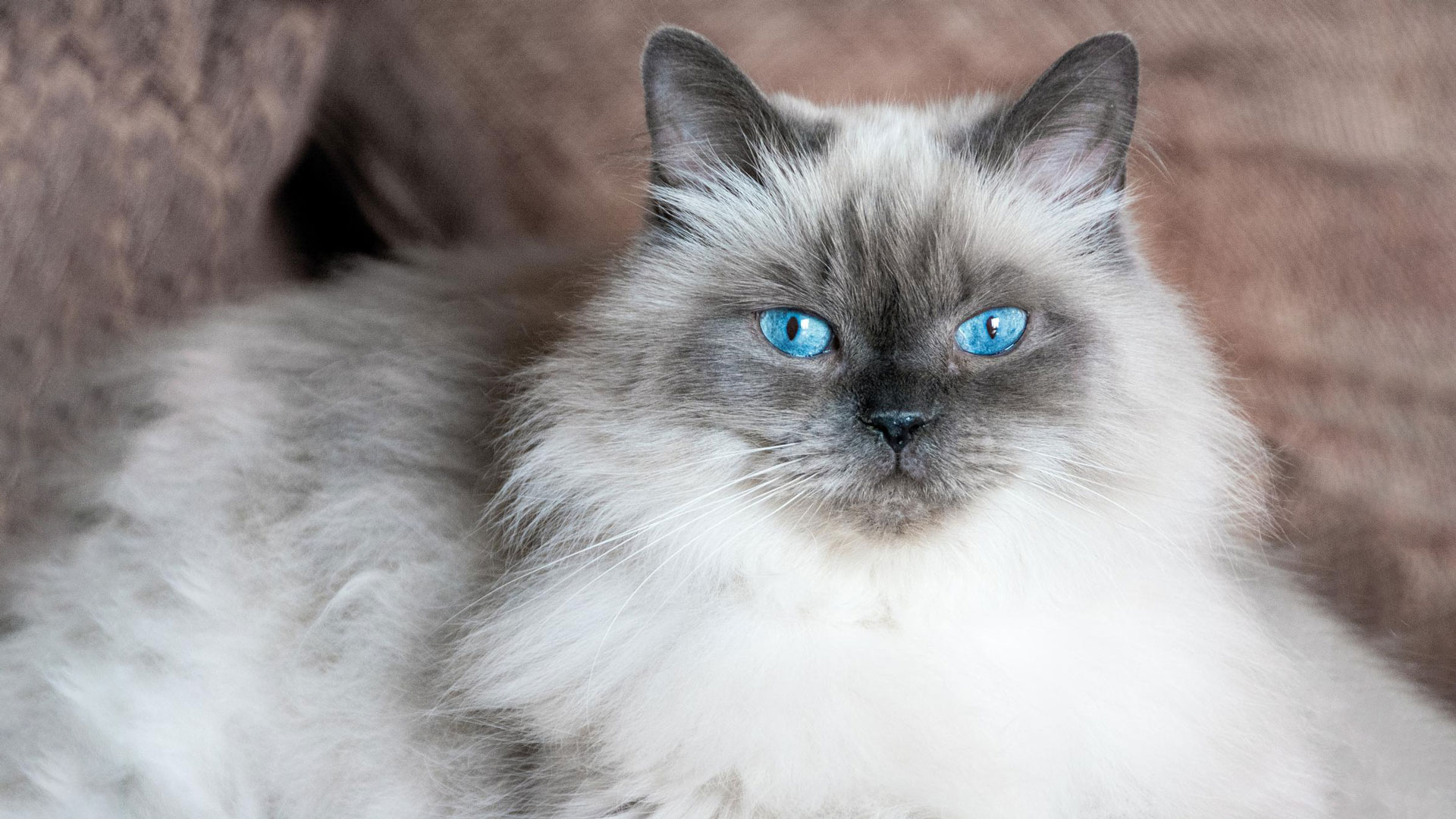Himalayan cats are absolutely stunning! They’re known for their beautiful long coats and unique color points.
Let’s get to know more about Himalayan cats and their origin, characteristics, and care requirements.
Himalayan Kitten Appearance
The Himalayan cat is a cross between Siamese and Persian cats. They got the colorpoint on their face, ears, paws, and tails from Siamese cat and their long, shiny fur from their Persian ancestors.
| Size | Large or medium-sized. |
| Weight | 8-12lbs. |
| Fur color | White or cream with darker point chocolate, seal, lilac or black. |
| Eye color | Copper, green, blue. |
| Fur coat | Long |
Himalayan Characteristics
Himalayan cats have unique and charming characteristics. Let’s get to know more about this breed’s features.

- Energy Levels: low to moderate energy levels
- Sociability: Himalayans are affectionate breed and enjoys bonding with humans.
- Trainability: Himalayan cats are remarkably intelligent, making them trainable. However, their lack of motivation can make training a challenge.
- Lifespan: They live up to 9-14 years.
Himalayan Cat Breed Temperament
A Himalayan cat is known for its calm demeanor and lovely personality. As mentioned before, these affectionate felines make wonderful family pets.
These companions are versatile and can adapt to a large home or a small apartment. They are best for families, older people, or people who like quiet pets.
The Origins of the Himalayan Feline Breed
In 1931, Virginia Cobb and Clyde Keeler founded an experimental cat breeding program in which they crossbred Siamese and Persian cats and produced Himalayans.
Later, in the 1950s, Marguerita Goforth continued their experiment and successfully bought recognition for this crossbreed in 1957.
The Cat Fancier Association and the American Cat Fancier Association officially recognized this hybrid breed.
Common Health Problems in Himalayan Kitty

Although this cat breed has a longer life span in comparison to most cats, Himalayans are prone to some health conditions, such as;
- Polycystic Kidney Disease (PKD): Multiple cysts form in the kidneys.
- Hypertrophic cardiomyopathy: A condition that causes the muscular walls of a their heart to thicken.
- Brachycephalic Airway Syndrome: Leads to several upper airway abnormalities
- Luxating patella: kneecap that moves out of its normal location.
- Dental Malocclusions: Misaligned teeth leading to tooth decay or gum related problems.
Keeping Your Fluffy Feline Friend Healthy
When you welcome a new furry family member, it comes with a set of responsibilities. It’s important to ensure that you cater to the specific needs of this breed.
Daily Grooming
Himalayans, known for their stunning long fur from their Persian relatives, require special attention and grooming to maintain their coat’s health. Regular combing is essential to prevent tangling, hairballs, and matting.
Interactive Play and Affection
This crossbreed of Persian and Siamese enjoys playtime, so provide interactive toys like laser pointers or feather wands for exercise and fun.
Dental Care
Since Himalayans have flat faces, they are more prone to dental problems. That’s why it’s imperative to brush your cat’s teeth daily with pet-safe toothpaste. Schedule regular veterinarian checkups and dental cleanings.
Proper Nutrition and Hydration

Give them good nutritious food to keep this breed away from kidney problems. Ensure they stay hydrated. Consult your pet’s veterinarian about which nutritious food would be suitable for your cat.
Where to Find Himalayan Cats
Are you looking for a sophisticated and refined Himalayan cat to bring joy and elegance to your family? Don’t you worry!
Visit your local animal shelter . For those interested in purebred cats, it’s crucial to connect with a reputable breeder.
Embrace the Charm of This Adorable Breed
Consider getting yourself a blue eyed Himalayan cat if you want a comforting companion with a calm and affectionate nature. You’ll just need to take care of their grooming and provide this breed with nutritious cat food.





